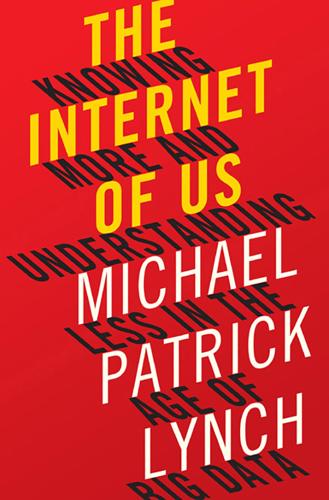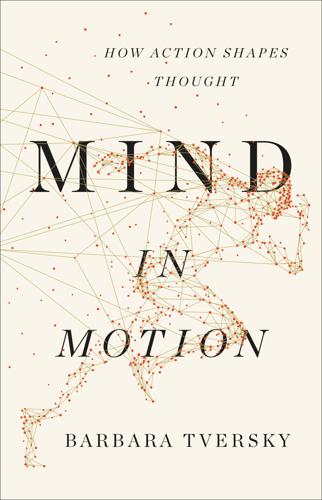patient HM
6 results back to index

pages: 196 words: 54,339
Team Human by Douglas Rushkoff
1960s counterculture, Abraham Maslow, Adam Curtis, autonomous vehicles, basic income, Berlin Wall, big-box store, bitcoin, blockchain, Burning Man, carbon footprint, circular economy, clean water, clockwork universe, cloud computing, collective bargaining, Computing Machinery and Intelligence, corporate personhood, digital capitalism, disintermediation, Donald Trump, drone strike, European colonialism, fake news, Filter Bubble, full employment, future of work, game design, gamification, gig economy, Google bus, Gödel, Escher, Bach, hockey-stick growth, Internet of things, invention of the printing press, invention of writing, invisible hand, iterative process, John Perry Barlow, Kevin Kelly, Kevin Roose, knowledge economy, Larry Ellison, Lewis Mumford, life extension, lifelogging, Mark Zuckerberg, Marshall McLuhan, means of production, mirror neurons, multilevel marketing, new economy, patient HM, pattern recognition, peer-to-peer, Peter Thiel, planned obsolescence, power law, prosperity theology / prosperity gospel / gospel of success, Ray Kurzweil, recommendation engine, ride hailing / ride sharing, Ronald Reagan, Ronald Reagan: Tear down this wall, shareholder value, sharing economy, Silicon Valley, Silicon Valley billionaire, social intelligence, sovereign wealth fund, Steve Jobs, Steven Pinker, Stewart Brand, tech billionaire, technoutopianism, TED Talk, theory of mind, trade route, Travis Kalanick, Turing test, universal basic income, Vannevar Bush, We are as Gods, winner-take-all economy, zero-sum game
We now know, beyond any doubt, that we are dumber when we are using smartphones and social media Debra Kaufman, “Studies Show Smartphones, Social Media Cause Brain Drain,” etcentric, October 10, 2017. 35. human beings require input from organic, three-dimensional space William Softky, “Sensory Metrics of Neuromechanical Trust,” Journal of Neural Computation 29, no. 9 (September 2017). We remember things better when we can relate them to their physical locations Luke Dittrich, Patient H.M.: A Story of Memory, Madness, and Family Secrets (New York: Random House, 2017). Our relationships become about metrics, judgments, and power Benoit Denizet-Lewis, “Why Are More American Teenagers Than Ever Suffering from Severe Anxiety?” New York Times Magazine, October 11, 2017. 36. Surprisingly, the inability to establish trust in digital environments doesn’t deter us from using them William Softky, “Sensory Metrics of Neuromechanical Trust,” Journal of Neural Computation 29, no. 9 (September 2017).

pages: 230 words: 61,702
The Internet of Us: Knowing More and Understanding Less in the Age of Big Data by Michael P. Lynch
Affordable Care Act / Obamacare, Amazon Mechanical Turk, big data - Walmart - Pop Tarts, bitcoin, Cass Sunstein, Claude Shannon: information theory, cognitive load, crowdsourcing, data science, Edward Snowden, Firefox, Google Glasses, hive mind, income inequality, Internet of things, John von Neumann, meta-analysis, Nate Silver, new economy, Nick Bostrom, Panopticon Jeremy Bentham, patient HM, prediction markets, RFID, sharing economy, Steve Jobs, Steven Levy, the scientific method, The Wisdom of Crowds, Thomas Kuhn: the structure of scientific revolutions, Twitter Arab Spring, WikiLeaks
And the philosopher Hubert Dreyfus has influentially argued that knowing how to do something—like ride a bike—can’t simply be understood as grasping a set of rules or directions. At bottom it involves a type of discernment or acuity that can’t be discursively codified.16 The idea that there is a sharp difference between knowing how and knowing facts seems to have some empirical support as well. Consider the famous case of the patient HM. HM was an epileptic who had undergone a lobectomy. He was then observed to have severe anterograde amnesia. In other words, he would forget events almost immediately after they happened. In a groundbreaking experiment, the cognitive psychologist Brenda Milner had HM perform a mirror-drawing task in which he had to draw the outline of a star through a mirror while not being able to see his own arm.17 The results were astounding: he was able to improve at the task after several days, even though he had no memory of the event.

Know Thyself by Stephen M Fleming
Abraham Wald, Alan Turing: On Computable Numbers, with an Application to the Entscheidungsproblem, AlphaGo, autism spectrum disorder, autonomous vehicles, availability heuristic, backpropagation, citation needed, computer vision, confounding variable, data science, deep learning, DeepMind, Demis Hassabis, Douglas Hofstadter, Dunning–Kruger effect, Elon Musk, Estimating the Reproducibility of Psychological Science, fake news, global pandemic, higher-order functions, index card, Jeff Bezos, l'esprit de l'escalier, Lao Tzu, lifelogging, longitudinal study, meta-analysis, mutually assured destruction, Network effects, patient HM, Pierre-Simon Laplace, power law, prediction markets, QWERTY keyboard, recommendation engine, replication crisis, self-driving car, side project, Skype, Stanislav Petrov, statistical model, theory of mind, Thomas Bayes, traumatic brain injury
Damage to these networks can lead to isolated changes in self-awareness—we may literally lose the ability to know ourselves. The first hints that brain damage could lead to problems with metacognition came in the mid-1980s. Arthur Shimamura, then a postdoctoral researcher at the University of California, San Diego, was following up on the famous discovery of patient “HM,” who had become forever unable to form new memories after brain surgery originally carried out to cure his epilepsy. The surgery removed HM’s medial temporal lobe, an area of the brain containing the hippocampus and a region crucial for memory. Shimamura’s patients, like HM, had damage to the temporal lobe, and therefore it was unsurprising that many of them were also amnesic.

pages: 329 words: 93,655
Moonwalking With Einstein by Joshua Foer
Albert Einstein, Asperger Syndrome, Berlin Wall, conceptual framework, deliberate practice, Fall of the Berlin Wall, Ford Model T, Frank Gehry, lifelogging, mental accounting, Neil Armstrong, patient HM, pattern recognition, Rubik’s Cube, speech recognition, Stephen Hawking, the long tail, W. E. B. Du Bois, zero-sum game
Why Is It Difficult to Put Names to Faces? British Journal of Psychology, 81, 287-297. Coleman, J. (1992). Ancient and medieval memories: studies in the reconstruction of the past. Cambridge, England: Cambridge University Press. Cooke, E. (2008). Remember, remember. London: Viking. Corkin, S. (2002). What’s New with the Amnesic Patient H.M. Nature Reviews Neuroscience, 3, 153-160. Corsi, P. (1991). The enchanted loom: chapters in the history of neuroscience. New York: Oxford University Press. Cott, J. (2005). On the sea of memory: a journey from forgetting to remembering. New York: Random House. Darnton, R. (1990). First Steps Toward a History of Reading.

pages: 455 words: 116,578
The Power of Habit: Why We Do What We Do in Life and Business by Charles Duhigg
Atul Gawande, behavioural economics, Checklist Manifesto, corporate governance, cuban missile crisis, delayed gratification, desegregation, game design, haute couture, impulse control, index card, longitudinal study, meta-analysis, patient HM, pattern recognition, power law, randomized controlled trial, rolodex, Rosa Parks, Silicon Valley, Stanford marshmallow experiment, tacit knowledge, telemarketer, Tenerife airport disaster, the strength of weak ties, Toyota Production System, transaction costs, Walter Mischel
., Whose Loss of Memory Made Him Unforgettable, Dies,” The New York Times, December 5, 2008. 1.9 with a small straw This was a common practice at the time. 1.10 He introduced himself to his doctors Dittrich, “The Brain That Changed Everything”; Larry R. Squire, “Memory and Brain Systems: 1969–2009,” Journal of Neuroscience 29, no. 41 (2009): 12711–26; Larry R. Squire, “The Legacy of Patient H.M. for Neuroscience,” Neuron 61, no. 1 (2009): 6–9. 1.11 transformed our understanding of habits’ power Jonathan M. Reed et al., “Learning About Categories That Are Defined by Object-Like Stimuli Despite Impaired Declarative Memory,” Behavioral Neuroscience 113 (1999): 411–19; B. J. Knowlton, J.

pages: 426 words: 117,027
Mind in Motion: How Action Shapes Thought by Barbara Tversky
Apple's 1984 Super Bowl advert, Asperger Syndrome, augmented reality, clean water, cognitive load, continuous integration, double helix, en.wikipedia.org, fundamental attribution error, Hans Rosling, Intergovernmental Panel on Climate Change (IPCC), John Snow's cholera map, Lao Tzu, meta-analysis, mirror neurons, natural language processing, neurotypical, patient HM, Richard Feynman, Steven Pinker, TED Talk, the new new thing, theory of mind, urban planning
Can we reconcile the declarative memory and spatial navigation views on hippocampal function? Neuron, 83(4), 764–770. Poppenk, J., Evensmoen, H. R., Moscovitch, M., & Nadel, L. (2013). Long-axis specialization of the human hippocampus. Trends in Cognitive Sciences, 17(5), 230–240. H.M. Corkin, S. (2002). What’s new with the amnesic patient HM? Nature Reviews Neuroscience, 3(2), 153. Milner, B., Corkin, S., & Teuber, H. L. (1968). Further analysis of the hippocampal amnesic syndrome: 14-year follow-up study of HM. Neuropsychologia, 6(3), 215–234. Scoville, W. B., & Milner, B. (1957). Loss of recent memory after bilateral hippocampal lesions.

When Computers Can Think: The Artificial Intelligence Singularity by Anthony Berglas, William Black, Samantha Thalind, Max Scratchmann, Michelle Estes
3D printing, Abraham Maslow, AI winter, air gap, anthropic principle, artificial general intelligence, Asilomar, augmented reality, Automated Insights, autonomous vehicles, availability heuristic, backpropagation, blue-collar work, Boston Dynamics, brain emulation, call centre, cognitive bias, combinatorial explosion, computer vision, Computing Machinery and Intelligence, create, read, update, delete, cuban missile crisis, David Attenborough, DeepMind, disinformation, driverless car, Elon Musk, en.wikipedia.org, epigenetics, Ernest Rutherford, factory automation, feminist movement, finite state, Flynn Effect, friendly AI, general-purpose programming language, Google Glasses, Google X / Alphabet X, Gödel, Escher, Bach, Hans Moravec, industrial robot, Isaac Newton, job automation, John von Neumann, Law of Accelerating Returns, license plate recognition, Mahatma Gandhi, mandelbrot fractal, natural language processing, Nick Bostrom, Parkinson's law, patent troll, patient HM, pattern recognition, phenotype, ransomware, Ray Kurzweil, Recombinant DNA, self-driving car, semantic web, Silicon Valley, Singularitarianism, Skype, sorting algorithm, speech recognition, statistical model, stem cell, Stephen Hawking, Stuxnet, superintelligent machines, technological singularity, Thomas Malthus, Turing machine, Turing test, uranium enrichment, Von Neumann architecture, Watson beat the top human players on Jeopardy!, wikimedia commons, zero day
People can only consciously remember about seven different symbols at a time when considering a problem, and they are quickly forgotten if one is distracted. On the other hand, people have millions of longer-term memories. It appears that many longer term memories are formed in a small part of the cerebral cortex known as the hippocampus. Evidence of this is the famous case of patient H.M., who had his hippocampus largely removed to prevent severe epilepsy. H.M. could function fairly normally and had long-term memories, but he could not form any new long-term memories. Anatomical studies suggest that the hippocampus does in fact contain large recurrent networks that can hold a thought for a short period of time, during which time they repeatedly stimulate other parts of the brain which then undergo Hebbian learning.